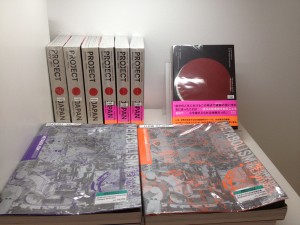Way back in 2005, when Momus (aka Nick Currie, a former zemi guest), was at the peak of his blogging form, he posted an entry titled Fashion Goth that began:
I’m not into this thing, fashion goth.
It’s probably because I’m not into rock and roll, Romanticism, or Christianity.
I’m not into Asia Argento or Vincent Gallo.
I think their way of thinking is inherently right wing.
I mean, Gallo votes Republican. Fucking fashion goth!
The Fashion Goth Rant was a brilliantly scathing and simultaneously brilliantly funny indictment of the modes of late twentieth century American popular culture and music. Wondering how the rant would sound spoken aloud, I ran the (slightly tweaked) text through a speech synthesis program with the most British sounding voice I could easily find. I happened to be listening to an ambient track at the same time, as was my habit while working, in my ATR days, and noticed a good fit. Here’s how the mix sounded:
I vaguely recall Nick saying he was tempted to include the mix on the ‘Friendly’ album he was planning at the time, but that his FG rant wasn’t friendly enough.
My all time favourite quote from the Fashion Goth Rant, and perhaps all time fave from Momus’ Click Opera blog is the line:
The Marquis de Sade was mounting a critique of the Enlightenment.
What’s wrong with the Enlightenment, girls?
Near perfect deadpan rendition of this by the robotic British voice! And I really love the quasi-mathematical:
When I say “I like X much better”, it’s usually because X has a keen sense of the absurd.
And also because I can’t immediately pigeonhole X’s style.
which serves nicely as a definition of what was great about the anti-rock, post-punk aesthetic of the late seventies and early eighties, Nick’s formative years as an artist.
Click on the link to go the entire text (with images) of Momus’ Fashion Goth Rant.
Artist Dan Graham also considers connections between rock and religion in American culture in the collection of his writings published by MIT Press, Rock My Religion, but from a standpoint that is not anti-rockist. Here’s some related documentary video art with the same title:
Rock My Religion from Diogo Tirado on Vimeo.



